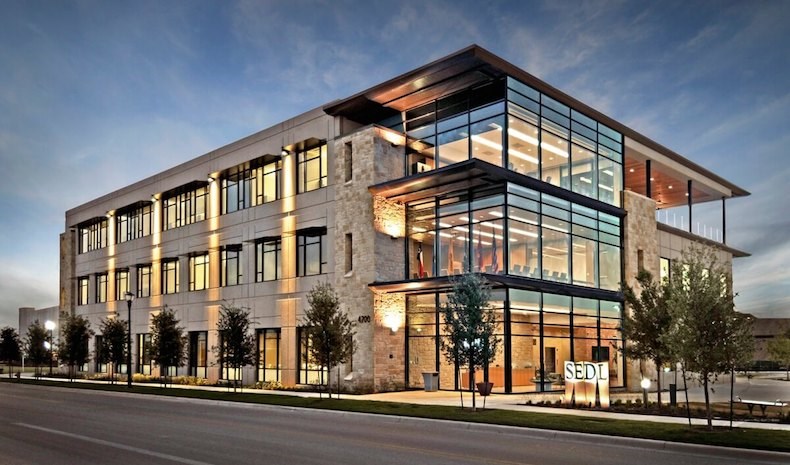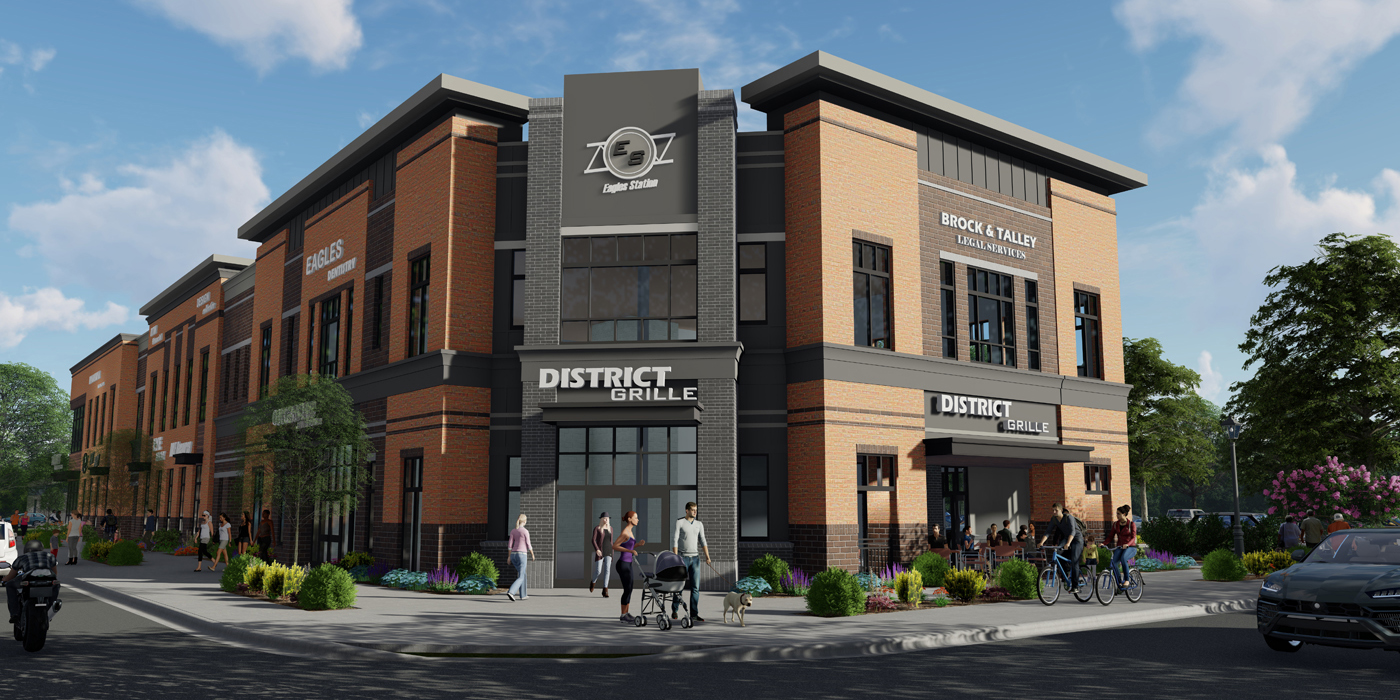Discover the Ingenious Providers Offered by Commercial Architects for Your Following Job
Commercial architects play a vital function fit the built setting. They mix functionality with aesthetic charm, creating areas that reverberate with brand name identification. These professionals employ innovative layout solutions, sustainable techniques, and advanced innovations to boost customer experiences. Their collective approach guarantees placement with customer visions and functional requirements. The extent of their services frequently extends beyond design. The next steps in understanding just how these architects browse complex project demands might amaze you.
Understanding the Function of Commercial Architects
The function of business architects may differ depending on the specific project, their key feature revolves around designing useful and aesthetically enticing spaces for services. These professionals are tasked with comprehending the one-of-a-kind demands of each client, whether it be a retailer, office complex, or commercial facility. They perform thorough site evaluations and work together with stakeholders to guarantee that the layout aligns with the company purposes and brand name identity.Commercial architects additionally navigate numerous governing demands, protecting compliance with zoning regulations and building regulations. Their knowledge extends to developing sustainable styles that advertise power performance and ecological duty. Furthermore, they handle the project's timeline and budget plan, collaborating with specialists and designers throughout the building procedure. By mixing imagination with technological understanding, commercial architects play an important function in transforming theoretical ideas into substantial truths, ultimately improving the performance and appeal of commercial areas.
Ingenious Layout Solutions for Special Spaces
As commercial rooms progressively require diversity to attract attention in open markets, cutting-edge layout remedies have actually become necessary for architects. These professionals leverage their creative thinking and technological knowledge to craft unique environments that show brand identity and enhance customer experience. By incorporating cutting-edge technology and materials, commercial architects can change common spaces into bewitching venues that engage clients and influence employees.Architects employ different strategies, such as flexible reuse, which renews existing frameworks while maintaining their historical value. They additionally discover non-traditional layouts and multifunctional spaces that deal with varied needs, making certain versatility for future growth.Furthermore, the unification of biophilic design-- bringing nature inside-- produces welcoming environments that advertise wellness - commercial architects. This interest to information in ingenious design not just addresses aesthetic worries however likewise cultivates area and collaboration. Ultimately, these customized options allow organizations to grow in an ever-evolving landscape, establishing them in addition to rivals
Lasting Style Practices
Lasting style practices have actually become an essential focus for business architects looking for to produce impactful designs that reverberate with ecological stewardship. These techniques focus on making use of renewable energies, energy efficiency, and marginal waste, reflecting a dedication to lowering the eco-friendly impact of buildings. Architects incorporate products that are sustainably sourced or reused, ensuring that building and construction techniques straighten with ecological principles.Furthermore, the integration of green roofs and wall surfaces improves biodiversity while boosting energy efficiency. Efficient water administration systems, such as rain harvesting, add to sustainability by preserving water sources. All-natural ventilation and daylighting approaches are likewise used to optimize indoor atmospheres, lowering reliance on fabricated heating and lights.
Integrating Innovation in Architectural Layouts
An increasing variety of industrial architects are embracing innovation as a transformative aspect in building design. By leveraging innovative software tools such as Building Information Modeling (BIM), architects can create detailed 3D representations of projects, enabling for improved visualization and collaboration among stakeholders. This innovation helps with real-time changes, lessening mistakes and streamlining the design process.Additionally, architects are incorporating clever building innovations into their layouts, which enhance energy performance and owner comfort. Functions such as automated lights, environment control, and security systems can be seamlessly included, promoting sustainable methods and minimizing functional costs.The use online and increased truth also permits clients to experience layouts prior to building starts, offering invaluable understandings right into spatial connections and aesthetic selections. Inevitably, the integration of innovation in architectural designs not only cultivates technology but also guarantees that tasks are executed with accuracy and aligned with modern needs.

Task Administration and Sychronisation Solutions
Reliable task management and coordination solutions are vital for the successful implementation of business building jobs. These solutions assure that all aspects of a project, from preliminary layout to last building and construction, are effortlessly integrated. Commercial architects play a significant duty in working with between various stakeholders, consisting of clients, specialists, and vendors, to keep clear communication and placement on project goals.By implementing structured methods, architects can manage timelines, spending plans, and resources successfully, decreasing delays and expense overruns. They utilize job monitoring software application and devices to track progression, take care of documents, and assist in partnership among team members.Additionally, these services consist of threat analysis and mitigation methods, confirming potential difficulties are identified and addressed proactively. The outcome is a streamlined procedure that improves total task efficiency and high quality, eventually causing an effective end result that fulfills the customer's vision and expectations.
Regulative Conformity and Zoning Support
Effective regulative conformity and zoning help are essential for the success of any kind of business task. Architects need to possess a deep understanding of regional policies and zoning laws to lead customers through the intricacies of the authorization procedure. This knowledge not only ensures adherence to legal requirements however additionally helps enhance project style and performance.
Navigating Local Regulations
Exactly how can commercial architects ensure their designs align with neighborhood laws? By remaining knowledgeable about the ever-evolving landscape of building regulations and regional ordinances, architects play an essential duty in making certain conformity. They carry out extensive research to recognize the details laws governing products, safety and security requirements, and building techniques relevant to each job. Collaborating carefully with local authorities, business architects can steer with the complexities of governing structures successfully. discover here They likewise facilitate necessary licenses and evaluations, streamlining the authorization procedure. This positive approach not only reduces potential lawful problems yet also improves project effectiveness. Inevitably, their proficiency in maneuvering local laws equips clients to realize their vision while adhering to all called for standards and standards.
Zoning Law Knowledge
Zoning law knowledge is necessary for industrial architects guiding via the complexities of land use guidelines. These architects possess extensive understanding of neighborhood zoning codes, which control residential or commercial property advancement, land use, and structure specifications. By understanding these laws, they Our site help customers navigate the usually elaborate approval procedures needed for building jobs. Their experience assurances conformity with zoning laws, lessening the risk of job delays or lawful complications.Additionally, commercial architects give valuable support in obtaining essential permits and differences, helping with smoother interactions with local authorities. They also use calculated referrals to enhance site layout and make the most of the capacity of a building while adhering to zoning constraints. Eventually, their zoning legislation proficiency plays a critical function in the effective understanding of commercial projects.
Collective Approaches With Clients and Stakeholders
Successful commercial style rests on the capability to foster strong collaboration with clients and stakeholders throughout the layout procedure - commercial architects. Architects participate in open dialogues, making certain that all celebrations' visions and requirements are integrated into the project. This collective technique starts in the initial stages, where architects perform workshops and conceptualizing sessions, permitting clients to express their goals and concerns.Stakeholder input is similarly vital; architects frequently arrange meetings with neighborhood members, city governments, and various other appropriate entities to collect varied viewpoints. By utilizing visualization tools, such as 3D modeling, architects help with much better understanding and communication.This iterative feedback process not only improves layout quality but additionally constructs trust fund, causing even more successful end results. Eventually, the joint viewpoint of commercial architects changes concepts right into useful areas that mirror the aspirations of customers and the more comprehensive community, making certain a harmonious relationship throughout the project lifecycle

Frequently Asked Concerns
What Is the Regular Timeline for an Industrial Design Job?
The normal timeline for an industrial architecture task differs, usually extending 6 to 18 months. Factors influencing this duration include project complexity, regulatory authorizations, and client responsiveness, influencing each stage from style to construction conclusion.
Just How Do Commercial Architects Charge for Their Solutions?
Commercial architects typically bill based upon project scope, intricacy, and dimension. Usual charge This Site structures consist of hourly rates, dealt with fees, or percentage-based costs computed from the overall building and construction expense, making sure transparency and positioning with client assumptions.
Can Commercial Architects Aid With Interior Decoration?
Commercial architects can undoubtedly assist with interior layout, integrating capability and aesthetic appeals. Their expertise assurances natural spaces that line up with architectural vision, improving individual experience while meeting governing requirements and client objectives with cutting-edge style solutions.
What Kinds of Customers Do Commercial Architects Typically Collaborate With?
Commercial architects typically team up with diverse clients, consisting of companies, government entities, universities, and non-profit companies (commercial architects). Each client seeks customized building solutions to satisfy details useful and aesthetic requirements for their jobs and atmospheres
Just How Do Commercial Architects Remain Upgraded With Design Patterns?
Commercial architects stay upgraded with layout patterns through continuous education, going to market seminars, participating in expert networks, and looking into arising technologies. They also work together with various other experts to gain understandings into cutting-edge products and design techniques.